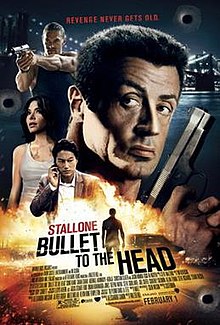So what's up with screenplay structure anyway? Do you Save The Cat or have My Story Beat Up Your Story? Are you a three-act adept, a four-act aficionado, a fervent five-acter or do you scoff at acts altogether? Do you bravely embark on the Writer's Journey or do you try to have Something Startling Happen every minute? What teacher/guru/manual do you follow above all others? Who deserves to be deified, and who should be thrown on the trash heap of history? Or should you throw all structural models overboard and blindly follow your instincts?
Here is the secret truth. Don't tell anyone I let you in on it.
Use whatever works for you.
The only thing that matters, is that you are able to tell the story you want to tell, in the best possible way. And that means structuring the emotional response of your audience to maximum effect.
So they will feel what you want them to feel, at the moment you want them to feel it. So they will be ahead of or behind or at exactly the same place as your characters, when you want them to be. So they will be able to follow the characters' transformation, or thrill at their exploits, or rail against unjust fate when tragedy strikes them down - just as you planned.
In a way, the proliferation of different structural models is a blessing: it allows writers to experiment, find whatever method they are most comfortable with - or develop their own variations on a theme.
It also gives you the opportunity to select different structural approaches depending on the type of story you are trying to tell. Sure, most of the models out there are explictly Hollywood-based, but recently the Save The Cat website posted a convincing analysis of Michael Haneke's Amour, an art-house film through and through.
So, if a structural model helps you create, use it and don't feel guilty! And if they feel too constraining - ignore them! Just get that script written, and make it the best it can be!
Tuesday, December 10, 2013
Bullet To The Head - When Good Buddy Movies Go Bad
It should have been a match made in heaven: Walter Hill, writer/director of many action and Western classics in the '70s and '80s helming a resolutely old-school buddy-action-noir movie, set in New Orleans, and featuring an aging hitman (Stallone) and a straightlaced young Asian cop (Sung Kang) who team up reluctantly to solve a couple of murders and uncover a real-estate conspiracy by a slimy lawyer (Christian Slater) and a corrupt African potentate-on-the-run (Adewale Akinnuoye-Agbaje). The bad guys have a nigh invincible mercenary on their side (Jason Momoa), who fights Stallone in a fire-ax duel. And to top everything off, Stallone even has a hot daughter (Sarah Shahi) who earns a living as a tattoo artist and gets involved in gratuitous nudity!
So what went wrong?
Somehow the screenplay manages to botch the most fundamental aspect of a buddy movie: the buddy relationship.
Stallone the old-school assassin and Kang the by-the-book geek cop hate each other from the start. And they spend most of the movie in each other's company - hating each other all the way through. In other words, the relationship is static instead of dynamic. The same story beat is repeated over and over. Cop wants to arrest assassin when all this is over, hitman is pissed that cop doesn't respect him after saving his life for the umptieth time.
The only progression occurs at the very end - and then it's a pretty big leap from mutual loathing to respect. The emotional change feels forced and way overdue.
Now, there are a few funny scenes between the two, especially the driving scenes in Stallone's car, and both actors have a good rapport going. But even these scenes stick to replaying the same beat: Stallone trumps and humiliates Kang, no matter the subject of their conversation. There's no real debate: Stallone's way is correct, Kang's is wrong, and we're never allowed the opportunity to forget it. Whereas any decent buddy movie made sure that the 'wild guy' learned a little bit of restraint from the 'square guy', and the square guy got to release his inner beast. Cliché, yes, but at least it works. Sabotaging this character dynamic without replacing it with something different and/or better, just cripples the film. And it makes the lead characters come across as very one-dimensional (and I'm not talking about the hottest boy band on the planet now).
It doesn't help that the conspiracy that gets revealed is so ordinary and uninvolving. The external storyline doesn't provide enough intellectual stimuli to keep the audience enthralled/surprised/excited througout the film. Neither villain has any depth or complexity (though they are plenty stupid). Their only reason for existing is so that they can send an army of goons to trouble our battle-happy heroes.
Subscribe to:
Posts (Atom)




